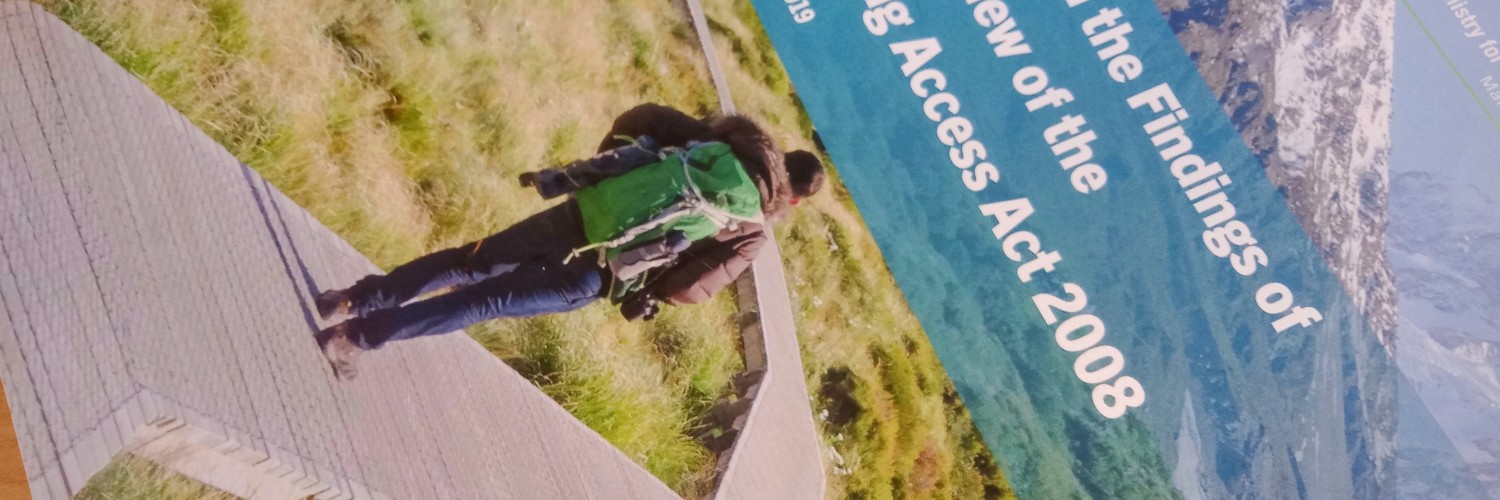Resourcing
A key issue raised through engagement feedback was that the amount of Government funding received by the Commission is inadequate. Submitters noted that the Commission’s achievements:
‘have been restricted significantly by low resourcing by successive governments. While the political creation of an access agency is laudable, it must be accompanied by realistic funding for the Commission to legally establish, manage, and defend legitimate recreational access. Currently this is not possible.’
Two areas in particular were identified as requiring additional funding. The first was the Commission’s RFAs, with the aim of funding both more hours and more staff. This recognised the important role played by these staff in providing a local point of contact and advice on access, as well as linking in with local government and community groups on broader work relating to access.
Second, submitters highlighted the need for WAMS to be maintained and improved. There has been significant investment to establish WAMS. However, ongoing maintenance and future upgrades are required to ensure it remains highly valued by access users. Without maintenance and necessary upgrades, the considerable investment in WAMS to date may be wasted.
The Commission receives $1.789 million per annum of Government funding, a figure which has not changed since the Commission’s inception in 2008, despite inflation. In its submission, the Commission stressed it is spending down existing cash reserves to enable it to do its current level of core work. In order to maintain
current service levels, the Commission stated it requires an additional $1.2 million of base funding per annum by late 2021, when existing cash reserves are forecast to run out. The Commission also noted that without this additional funding, current staffing and activity will need to be cut by 40-50 percent.
Any changes to the scope or quantum of its work recommended by this review must come with additional funding, otherwise the Commission will not be able to undertake it.
Recommendation 29: That:
-
given the core work of the Commission, specifically the Walking Access Mapping System and the work of Regional Field Advisers, is highly valued, the Commission’s baseline funding be increased to, at a minimum, keep up with the pace of inflation; and
-
any changes to the scope or quantum of the Commission’s work as a result of this review be accompanied by appropriate additional funding.
Supplementing Government funding with private funding and/ or cost recovery
Opinions were divided on whether the Commission should supplement its Government funding with private funding and/or cost recovery. Of those who answered this question in online feedback form, 45 percent supported supplementing with private
funding, 29 percent did not support supplementing with private funding, and 26 percent answered ‘don’t know’. Further, 49 percent supported supplementing with cost recovery, 25 percent did not support supplementing with cost recovery, and 26 percent answered ‘don’t know’.
Unsurprisingly, in online feedback form responses, the most frequently identified ‘pro’ of supplementing the Commission’s public funding with private funding and/ or cost recovery, was that this would result in an increase in the Commission’s resources. The most identified ‘con’ of supplementing with private funding and/or cost recovery, was a concern about issues of accountability and private funders having expectations of controlling how donated money would be spent.
The Commission emphasised in its submission that any funding from private funding or cost recovery must be in addition to Government funding, particularly given the potentially variable nature of these funding sources.
Private funding
Subsection 10(1)(i) of the Act currently provides for ‘receiving and managing private funding, contributions, or sponsorship for the promotion of walking access’. The Commission received advice in 2011 that establishing a fundraising system would take three to five years, and its board decided at that time that such efforts would diminish its ability to achieve its statutory objective, and that three to five years was too long in the context of its initial statutory life of ten years (bearing in mind the review of the Act commencing in 2018). This review recognises that the Act and the Commission are needed, and that the Commission should continue to operate into the future. It therefore suggests that the Commission’s board re-consider the issue of whether the Commission pursue private funding to top up its majority Government funding.
Additional resourcing would be required for the Commission to both establish and manage the sourcing and receipt of private funding, particularly in the short to medium term (prior to fundraising efforts being realised in the Commission’s cash reserves).
Cost recovery
The Commission has indicated its preference to cost recover for one of the current services it provides – preparing advice on public access issues in relation to overseas investment applications.
Guidelines for setting charges in the public sector, produced by the Treasury and the Auditor General, need to be considered here. However, cost recovery regimes are often justified where the benefits of the public sector goods or services provided, accrue primarily to the party from which the costs are being recovered. There is a good argument for the Commission being able to cost recover for this service as meeting the walking access aspect of the ‘benefits’ test in section 17 of the Overseas Investment Act 2005 (OIA), may increase an applicant’s chances of having their application approved. The Overseas Investment Office (LINZ) already charges purchase application fees in line with 23(1)(f) of the OIA.
It is likely that amendments would be required to both of the Walking Access Act and the OIA to enable cost recovery to occur.
Recommendation 30: That further investigation be undertaken, in consultation with the Commission and Land Information New Zealand, on enabling the Commission to recover the costs of its role in Overseas Investment Act processes, including determining the outputs and costs involved.

